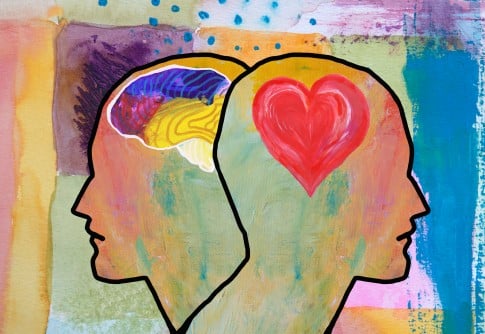Science
Mice and AI Show Surprising Similarities in Learning Cooperation

Researchers at UCLA have uncovered significant parallels in how both mice and artificial intelligence (AI) systems learn to cooperate. Their study reveals that both biological brains and AI neural networks adopt similar strategies when working together toward common goals. This research highlights crucial principles of cooperation that bridge the gap between biological and technological realms.
Cooperation is fundamental in various aspects of human society, influencing everything from workplace dynamics to international relations. Understanding how cooperation forms and sustains itself is vital, especially for addressing social conflicts and enhancing the design of AI systems. The breakdown of cooperative behavior can lead to social instability, making this research particularly relevant as AI systems continue to evolve.
The team at UCLA devised a novel behavioral task in which pairs of mice coordinated their actions within tight time constraints, ultimately lasting just 0.75 seconds, to earn rewards. Utilizing advanced calcium imaging technology, they monitored individual brain cell activity in the anterior cingulate cortex (ACC) during the task. Simultaneously, they created AI agents that underwent similar training in a virtual environment, enabling a direct comparison of cooperative learning between biological and artificial systems.
The findings revealed that the mice successfully adapted their behavior to work together effectively. They developed three key strategies: moving toward their partner’s side, waiting for their partner to arrive before initiating actions, and engaging in mutual interactions. Notably, interaction behaviors more than doubled as the mice honed their cooperation skills.
Neurons in the ACC were found to encode these cooperative behaviors, with enhanced performance linked to stronger neural representations of their partner’s actions. In a striking demonstration of the ACC’s importance, inhibiting its activity led to a significant reduction in cooperative behavior among the mice.
The AI agents mirrored the mice’s strategies, exhibiting waiting behaviors and coordinated actions. Both systems organized into functional groups that improved their responses to cooperation-related stimuli, emphasizing the importance of partner-related information as coordination skills advanced. When specific cooperation-related neurons were disrupted in the AI systems, their performance in cooperation tasks dropped dramatically, further underscoring the role of specialized circuits in driving successful cooperation.
The research team plans to explore whether similar neural mechanisms exist in other brain areas related to social behavior. They aim to understand how these foundational principles of cooperation might contribute to broader knowledge about social behavior development. The parallels between biological and artificial systems suggest that insights gained from studying animal cooperation could inform the design of more advanced collaborative AI systems.
Weizhe Hong, the study’s senior author and a professor in the Departments of Neurobiology and Biological Chemistry at UCLA, emphasized the significance of their findings. “We found striking parallels between how mice and AI agents learn to cooperate,” he stated. “Both systems independently developed similar behavioral strategies and neural representations, suggesting there are fundamental computational principles underlying cooperation that transcend the boundary between biological and artificial intelligence.”
This research is part of Hong’s larger initiative to explore prosocial behavior across biological and artificial systems. His recent work has demonstrated that both mice and AI systems develop “shared neural spaces” during social interactions. These findings collectively enhance our understanding of the neural mechanisms driving various forms of prosocial behavior.
“Understanding cooperation is crucial for addressing some of society’s biggest challenges,” Hong added. “By studying how both biological brains and AI systems learn to work together, we can better understand the neural basis of human social behavior while also creating more collaborative artificial intelligence.”
The study titled “Neural basis of cooperative behavior in biological and artificial intelligence systems” was published in the journal Science. It was authored by Mengping Jiang, Linfan Gu, Mingyi Ma, Qin Li, and Weizhe Hong from UCLA, alongside Jonathan C. Kao from the Departments of Electrical and Computer Engineering and Computer Science at UCLA.
Funding for this research was provided by multiple grants from the National Institutes of Health and other notable organizations.
-

 Lifestyle4 months ago
Lifestyle4 months agoLibraries Challenge Rising E-Book Costs Amid Growing Demand
-

 Sports3 months ago
Sports3 months agoTyreek Hill Responds to Tua Tagovailoa’s Comments on Team Dynamics
-

 Sports4 months ago
Sports4 months agoLiverpool Secures Agreement to Sign Young Striker Will Wright
-

 Lifestyle4 months ago
Lifestyle4 months agoSave Your Split Tomatoes: Expert Tips for Gardeners
-

 Lifestyle3 months ago
Lifestyle3 months agoPrincess Beatrice’s Daughter Athena Joins Siblings at London Parade
-

 World3 months ago
World3 months agoWinter Storms Lash New South Wales with Snow, Flood Risks
-

 Science4 months ago
Science4 months agoTrump Administration Moves to Repeal Key Climate Regulation
-

 Science3 months ago
Science3 months agoSan Francisco Hosts Unique Contest to Identify “Performative Males”
-

 Business4 months ago
Business4 months agoSoFi Technologies Shares Slip 2% Following Insider Stock Sale
-

 Science4 months ago
Science4 months agoNew Tool Reveals Link Between Horse Coat Condition and Parasites
-

 Sports4 months ago
Sports4 months agoElon Musk Sculpture Travels From Utah to Yosemite National Park
-

 Science4 months ago
Science4 months agoNew Study Confirms Humans Transported Stonehenge Bluestones









